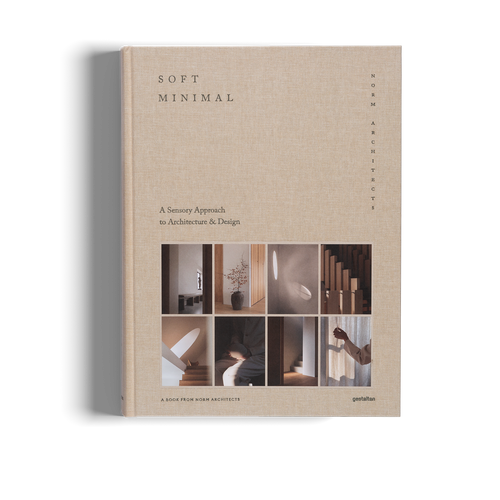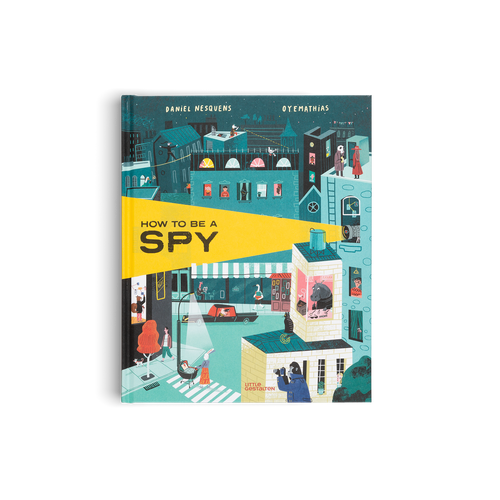
04/2020 food & beverages visual culture
Although “tweezer food” is sometimes used to describe overly fussy dishes, tweezers—and a few other basic tools—offer a simple, effective way to elevate your plating prowess.
While Jack New’s golden chirashizushi tacos are beautiful and otherworldly, they’re also a testament to the importance of tools in plating. To present the chirashizushi, which he created as the chef at Sydney’s Edition Coffee Roasters, New made good use of a circular mold, tweezers, and a shaker that he employed to finish the dish with a sprinkling of edible gold dust.

Some of the most indispensable tools in the kitchen: Kitchen tweezers (top left), a measuring pipette (top right), a variety of spatulas (bottom left), and a selection of spoons (bottom right).
While the term “tweezer food” can be used pejoratively to denote especially finicky dishes, having a set of kitchen tweezers and other decorating tools is simply a practical utilitarian choice for many chefs, to say nothing of home cooks interested in going further in the design of their own dinners. Some tools—like chopsticks, spoons, and graters— are so commonplace that you probably already own them.
“The tools are a practical choice for many chefs and home cooks interested in going further in the design of their own dinners. Some of them are so commonplace that you probably already own them.”
Let’s start with chopsticks. New himself is a big fan of moribashi, or Japanese plating chopsticks, which he uses constantly for almost all plating and garnishes. Their tweezer-thin metal tips are so delicate that they can grasp and handle almost any ingredient with incredible precision and control. Even if you don’t have a pair of moribashi, most chopsticks can still be useful in helping you pick up and plate more delicate ingredients. You may find yourself asking why not just use your fingers; you could, but they’re probably warm, while chopsticks—and large tweezers, for that matter— offer temperature control, which is crucial when handling certain heat-sensitive ingredients such as chocolate, raw fish, and caviar.

Plating brushes are used for intricate objects or very large objects that only require a small repair in a specific area of wear. The flexibility and smooth control allow you to add artistry to your plates.
Wooden tongs are also useful for moving around less delicate ingredients, such as salad greens. So are palette knives, which are commonly used by artists to spread paint but are also very useful for spreading ingredients across the surface of a plate. New uses small palette knives to place meat and fish (along with large tweezers).
Plating brushes and wedges offer another way to spread ingredients—and, thanks to the different shapes of their tips, they allow you to create striking designs in sauces, purées, or coulis. Their use isn’t limited to plates, though; you can also use them to apply glazes to cakes or create designs in cake frosting.
Like plating brushes and wedges, offset spatulas are also a godsend when it comes to spreading and smearing ingredients: their blunt, thin metal blade is particularly good for frosting, but it’s also handy for transferring ingredients and for creating swooshes of sauces and purées on the plate. New also employs “a hell of a lot” of spoons for his plating; he finds a good-quality quenelle spoon to be particularly indispensable.
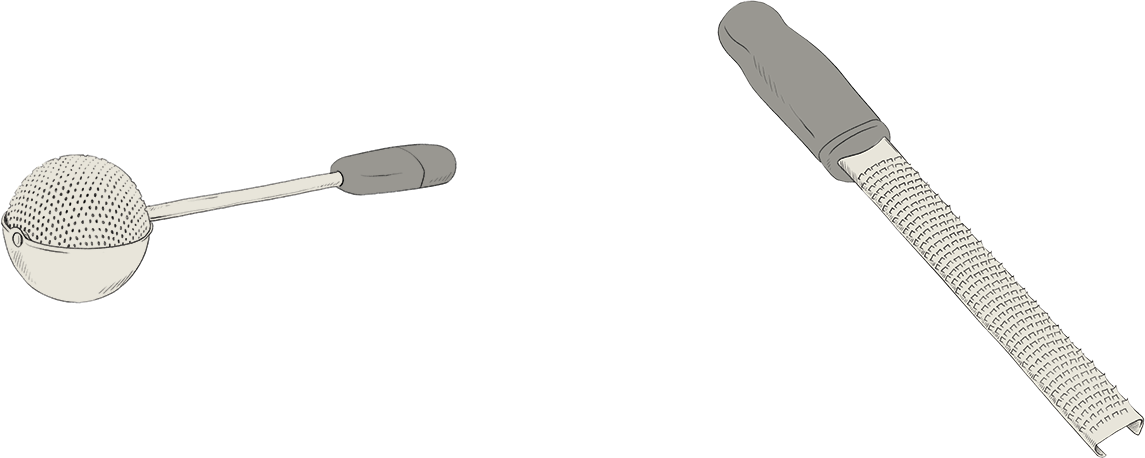
The twisting motion of the dusting wand (left) rolls the solid side into the perforated, while the Microplane's (right) curved design ensures that the spices fall exactly where you want them too. Both are highly valuable decorating tools for any chef.
Traditionally, chefs are taught to make a quenelle—or a smooth oval—using two spoons, but the three-sided shape of the specially designed quenelle spoon allows the task to be done using one hand, turning uniform masses of food like ice cream or beef tartare into faultless ovoids. For the home cook just starting to explore plating, New recommends buying spoons of different sizes, as well as a slotted spoon. You can use them to experiment with creating different shapes and drizzling sauces on the plate.
A dusting wand provides a way to evenly sprinkle ingredients such as powdered sugar, cocoa, and spices
The humble plastic squeeze bottle is another plating hero. It makes it easy for chefs to squeeze sauce or condiments onto a surface, and to squirt generous dollops that can then be turned into smears, swooshes, and other designs using other tools. A squeeze bottle can also be great for “drawing” a condiment or sauce on a plate, provided you have a steady hand.
New says he uses “quite a few circular molds, just to arrange things”—like the chirashi, which are particularly good for corralling ingredients like rice, sticky grains, and chopped raw fish and meat into uniform shapes. Molds come in many different shapes, such as squares and triangles, and their purpose is limited only by your imagination. Another great use for them is cutting pieces of cake out of a larger whole.
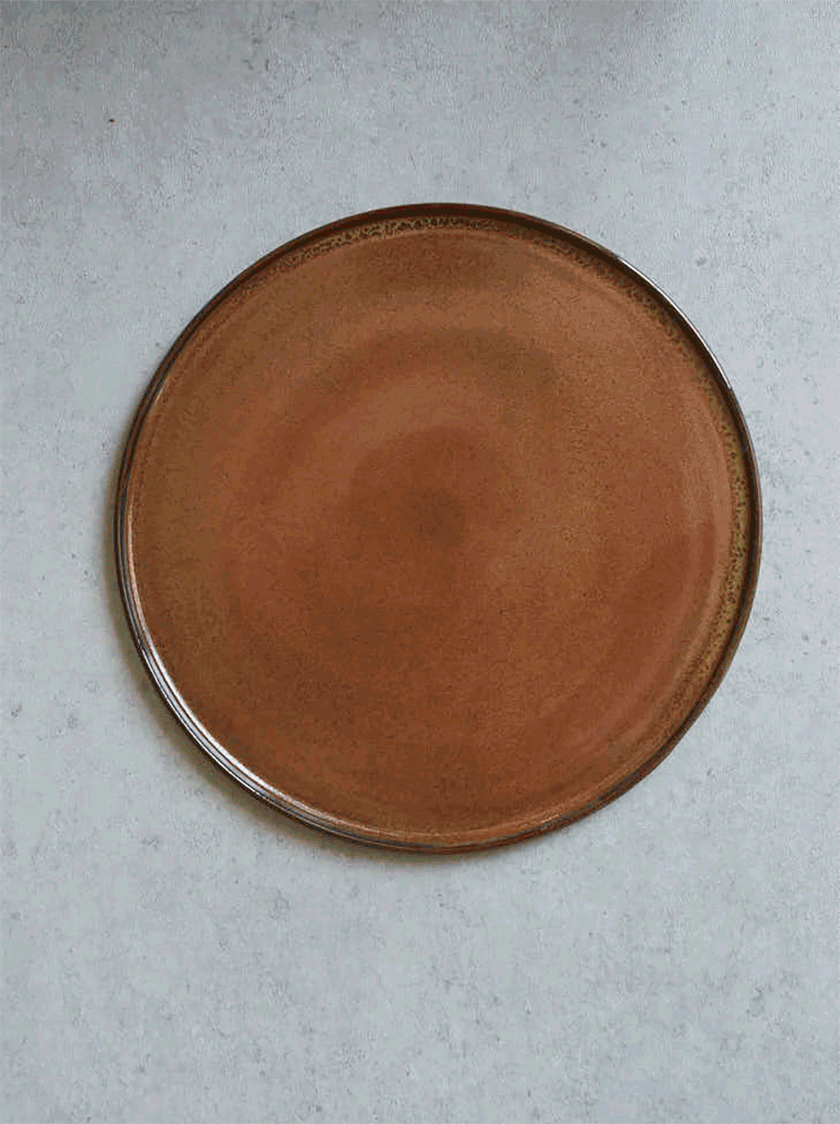
How to bring the plate alive: Nude is the second course of a four-course dinner that Dorsey titled Hidden, by Jenny Dorset in New York. The dish is accompanied by a poem that reads, “Here/With only ourselves,/I can no longer lie to you/So I can lie to me.” (Photo: Signe Birck, Jenny Dorsey, Story on a Plate)
A Microplane is another frequently used weapon in New’s arsenal. The tool, which was originally created for woodworking, functions as an extremely sharp and very fine grater and is particularly good for creating “snow”-like textures from ingredients such as chocolate, nuts, hard cheeses, and whole spices like nutmeg. It’s also ideal for zesting citrus fruits. Box graters provide a similar function to the Microplane; the best thing to do is experiment with grating different ingredients to see what kind of effects the grater’s different holes produce. Just be careful where you put your fingers, as they’re easy to grate too!
Like the shaker that New uses to sprinkle edible gold over his chirashizushi, a dusting wand provides a way to evenly sprinkle ingredients such as powdered sugar, cocoa, and spices—and edible gold, if you happen to have some— over the plate.
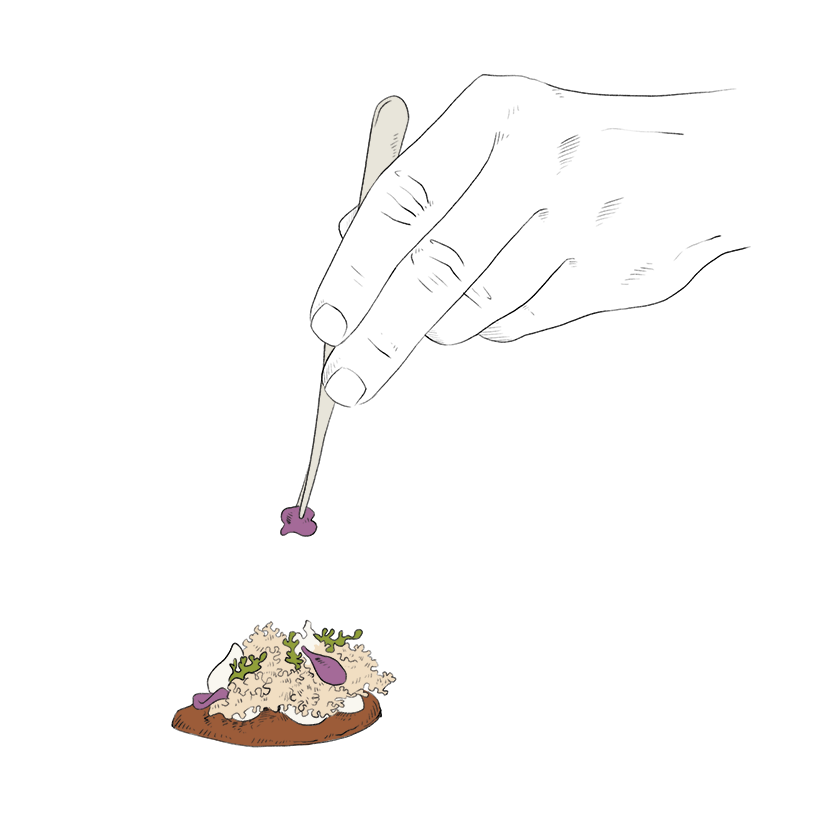
If you’re just beginning to explore plating, you don’t need to go crazy and buy lots of new tools. Aside from different spoons—some of which you probably already have—New says it’s fine to keep things simple. A Microplane is good, he says—“and maybe some plating tweezers if you’re feeling fancy.”
Learn the art of food plating through this beautiful guide of Story on a Plate.

